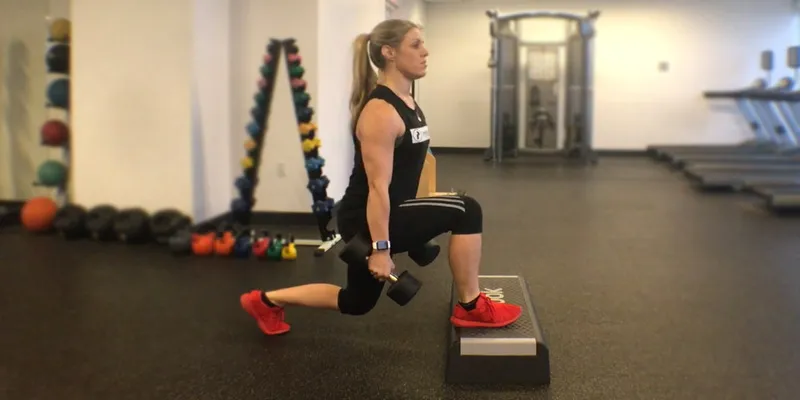A Handy Guide to Correcting Bad Posture
Bad posture is increasingly common in today’s world. Many people struggle with it due to prolonged hours of slouching, staring at screens, or sitting at desks. This can lead to serious medical problems, including back pain, neck stiffness, and even decreased lung capacity. Correcting poor posture not only enhances your confidence but also improves your overall well-being.
Anyone can improve their posture by adopting simple exercises and habits. Whether you’re working, exercising, or relaxing at home, you can make adjustments that significantly impact your posture. This guide will cover easy steps for improving bad posture and maintaining it long-term.

Why Does Bad Posture Occur?
There are several causes for bad posture , many of which are associated with modern living. One major factor is prolonged sitting, especially in an incorrect posture. This weakens muscles and unnecessarily strains the spine. Another significant factor is the overuse of electronic devices, leading to a “tech neck,” where the head is tilted forward, straining the neck and shoulders.
Over time, these habits can result in pain, muscle imbalance, and discomfort. Stress can also contribute; people may slouch unintentionally and strain their muscles. Weak or strained muscles cannot support the spine effectively, making it challenging to maintain an upright posture. Addressing these elements is crucial for correcting poor posture.
Understanding the Importance of Correct Posture
Good posture is crucial for overall health. It reduces strain by ensuring proper alignment of bones, muscles, and joints. It promotes even distribution of body weight, preventing discomfort and injury. Good posture alleviates strain on the spine, preventing back pain whether you are standing or sitting. It also enhances lung function, allowing deeper breathing and more efficient oxygen intake.
Additionally, good posture aids digestion by properly aligning the internal organs. It also boosts confidence—standing tall makes you appear more self- assured and assertive. These benefits highlight the importance of correcting poor posture to improve health and quality of life.

How to Improve Posture While Sitting
Maintaining good posture while seated is essential, especially for those who work long hours at a desk. First, ensure your chair supports your lower back. Choose a chair that promotes a neutral spine posture. Avoid crossing your legs; keep your feet flat on the floor to maintain alignment. Your thighs should be parallel to the ground, and your knees should form a 90-degree angle.
Adjust your monitor or workstation so your eyes are level with the screen, preventing neck strain. Keep your shoulders relaxed and elbows at a right angle with your arms on the desk. Take frequent breaks every 30 to 60 minutes to stand and stretch. These small adjustments can help maintain excellent posture throughout the day and reduce strain.
How to Improve Posture While Standing
Correcting posture while standing is equally important for maintaining a good physique. First, ensure your weight is evenly distributed between your feet. Avoid leaning to one side, which can cause tension and imbalance. Keep your feet about shoulder-width apart with knees slightly bent rather than locked.
Engage your core muscles by gently pulling in your belly button. This supports the spine and reduces strain on your lower back. Avoid slouching; keep your shoulders relaxed and pulled back. Align your head with your spine, keeping your ears over your shoulders. This alignment helps maintain correct posture and reduces back and neck discomfort. A tall stance not only prevents discomfort but also boosts confidence and energy levels.
Strengthening Exercises for Posture
Strengthening exercises are crucial for correcting poor posture. Focus on workouts targeting the back, core, and shoulders. A strong core supports the spine and maintains proper alignment. Effective core exercises include planks, side planks, and bridges. Strengthening back muscles can correct slouching tendencies, with rows, lat pull-downs, and back extensions being beneficial.
Shoulder exercises like reverse flies and shoulder shrugs develop the muscles that support correct posture. Incorporating yoga or Pilates can also enhance muscle balance, flexibility, and posture. Regular exercise not only corrects poor posture but also prevents its recurrence. Aim to incorporate these exercises at least two to three times a week for optimal results.
Stretching to Improve Flexibility
Stretching is another key component of improving posture. Tight muscles, especially in the neck, back, and shoulders, often contribute to bad posture. Stretching alleviates muscle tension and enhances flexibility, making it easier to maintain proper posture. Focus on stretches for the hamstrings, lower back, hip flexors, and chest. For example, a chest-opening stretch can help prevent slouching.
Long periods of sitting can cause tension; hip flexor stretches help alleviate this. Stretching the hamstrings and lower back can ease stress, making it easier to stand or sit tall. Incorporate these stretches into your routine, holding each position for 15 to 30 seconds. Stretching regularly throughout the day or after exercise will significantly improve flexibility and posture.
Posture Correction Through Daily Habits
Correcting posture involves making small daily adjustments, not just exercises. For instance, being mindful of your posture throughout the day can reduce slouching. As you walk, focus on keeping your shoulders back and head up. Avoid carrying heavy bags on one shoulder, which can disrupt alignment.
When on the phone, use a hands-free speakerphone or device to avoid neck strain. Ensure your workstation is ergonomic; adjust your chair, desk, and monitor to promote a neutral spine. Practice good posture while driving by adjusting the seat for proper alignment. These habits will help you maintain and improve a healthy posture over time.
Conclusion
Correcting posture is vital for overall health and well-being. Making small adjustments to daily routines, incorporating stretches and exercises, and seeking professional help when necessary will significantly improve your posture. Remember that consistency is key; while posture correction takes time, the benefits are well worth the effort. Improved posture will alleviate pain, enhance confidence, and boost energy levels. Start today and make the necessary adaptations to maintain proper posture for a more active and healthy life.











